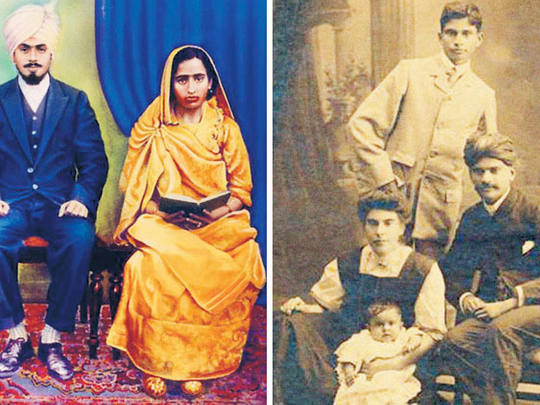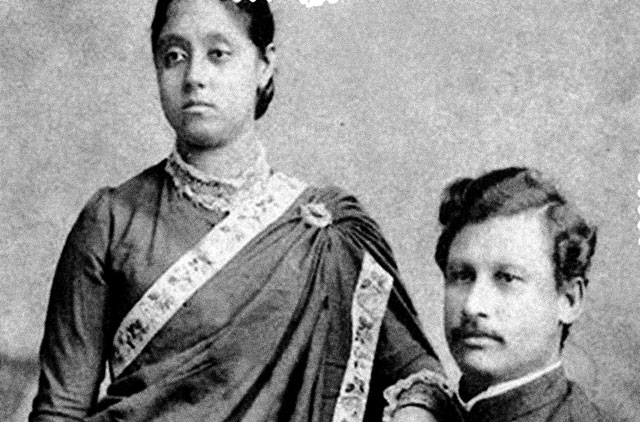
For a historian, primary documents, whether they are oral recollections of an eyewitness or photographs taken in a particular era, play an elemental role in drawing out and establishing the basic historical narrative of an event.
In recent times, American scholar Dr Charles Olson, Humanities Professor, Midwestern State University, Wichita Falls, Texas, in the Omani Oral History Project has utilised oral history in the form of video interviews to capture his interviewees conveying the Omani Renaissance as they saw it happen while Indian photographer Anusha Yadav pieces together a personal history of India through a mosaic of personal photographs in her Indian Memory Project.
While their respective journeys may eventually culminate in a book or documentary or an exhibition, the fresh, alternately contextualised accumulation of primary documents enables everyone, scholars and interested persons alike, to abstract their versions of personalised historical narratives from it.
Oral history, which constitutes a systematic recording of stories and information obtained by interviewing subjects regarding a particular historical event or era, has become a particularly significant form of primary evidence; the subjects interviewed provide a glimpse of the time as it was, their oral testimonies adding further layers to the existing written and photographic documentation of the time. Oral history also provides a more far-reaching view and multiple perspectives; furthermore, the emergence of video recording now means that the physical gesture too adds weight to the words being uttered.
Olson's three-tiered Omani Oral History Project consists of taking video interviews in Arabic, collecting and archiving the oral testimonies of his interviewees and editing the transcripts into a narrative document. He will also incorporate excerpts from the interviews into a documentary film chronicling the Omani Renaissance.
The idea of the Omani Oral History Project sprang in Olson's mind after he first visited Oman in 2004 as part of a study group; the impact of that trip on his understanding of Oman was evidently indelible. He encountered a country whose generation had undergone an amazing transition from one with little infrastructure and logistics to that of a developed, modern urban society. "However, it was not just the transformation but the character of the transformation that was so impressive," Olson points out. "Through a process that I have called selective modernisation, Oman has the adapted the features of modernity that make it a player in the larger world — but in a manner that respects a cultural identity inherited from the past." Furthermore, the time frame in which the transformation had occurred too was relatively short, meaning those that had participated in the making of modern Oman were still present, as familiar with the Oman of the past as they were with its present avatar: They had witnessed history in the making, being situated at the historical crossroads, so to speak.
"The project was conceived in a brainstorming session in Washington with a historian friend of mine who has taught Middle East topics at university for a decade or more," Olson says. They concurred that general aspects of the Omani Renaissance had been narrated in English but they were especially interested in the experiences of those Omanis who had lived through the Renaissance. However, identifying the methodology of narrating the stories of those Omanis became particularly crucial and it was an almost offhand remark by Olson's colleague regarding the use of oral history that triggered a thought process in him. "The Omani Renaissance was a perfect subject for oral history. The people who lived through the transition were still mostly alive but ageing. This was an opportunity to look at the story from both sides — pre- and post-Renaissance — as told by the people who lived it," he says. "The timing was perfect because once these people were gone, the opportunity to see the story from the [pre-Renaissance era] was also gone."
The additional significance of choosing the oral history method was that it was an approach that had not been used previously to record the changes that swept Oman in the last 40 years. "It thus presented the opportunity to narrate that story in an entirely unique way," Olson says. Furthermore, while valuable information and stories gleaned from the interviews would undoubtedly be of vital interest and significance to contemporary scholars of Oman and Omanis themselves, Olson highlights that the importance of the raw materials — the unedited interviews — may even have greater resonance for the future than for the present. It thus becomes evident that while the project is three-tiered in structure, the oral interviews are the focus. Olson says: "The book and the documentary are means of spreading awareness on the project and its importance for Omani history."
The material is filled with amazing stories of personal struggle and personal achievement, the professor says, with each individual's nuanced story foregrounding the overall Renaissance narrative. One lady overcomes domestic challenges to pursue adult education classes before finally becoming a teacher herself, in addition to attaining an university degree; another man begins life in a small, isolated village but makes history by becoming one of Oman's broadcasting pioneers. "The thematic thread that runs through virtually all these stories is of recognition of the importance of education," Olson says.
He visualises the project having enormous potential; future plans include English voiceovers of the interviews, which were otherwise entirely conducted in Arabic, and a webpage where both the unedited interviews and the English voiceovers will be available through the medium of internet. The materials are being archived at the Ministry of Information, Muscat, and at Moffet Library, Midwestern State University. "We hope that the project will trigger others into ideating similar projects. There is in fact, a wealth of material in the unedited interviews that neither the book nor the documentary will exhaust," he says.
If Olson's Omani Oral History Project seeks to preserve the voices and stories of people who have been witness to and participant in the shaping of a significant historical event, Anusha Yadav's Indian Memory Project (http://indianmemoryproject.wordpress.com/) makes an attempt to excavate the personal stories from Indian history through her photograph archiving project that documents personal family photographs.
A photographer herself, Yadav remarks that old photographs always intrigued her. "Photographs are a way to time travel: imagining who the subjects were, how it must have been then," she says.
The popular online social networking site Facebook and its photo-posting feature led her to contemplate working on a book containing original pictures of Indian weddings, both old and new. People began sending her pictures for the project, detailing the stories behind each image. It was then that she sensed the potential of something bigger emerging from what she had originally conceived. The accretion of personal pictures with their attendant stories and histories would preserve the individual/family's personal history while simultaneously contributing to an overall larger historical, personal narrative of India.
By spreading awareness on her project through online social media platforms such as Twitter and Facebook, in addition to word of mouth, she began receiving photographs and posted them on her blog, which now serves as the repository of the collected images. The sender of a photograph provides miniature biographies of the subjects in the image and highlights their own connection to them, thus bequeathing a little bit of their personal history to the visitor.
The Indian Memory Project clearly focuses on mapping a more personal and intimate narrative of India, the photographs literally and symbolically making visible stories that may have otherwise remained hidden. The decision to locate the project in a personal history context was therefore crucial to Yadav. "There is no better evidence than personal archives [to historically represent a personal India] because people were never trying to be any different from who they were, or how they were," she says, citing examples of personal studio photographs where the subject, rather than the photographer, exercises greater control over the photograph dynamics, thus imbuing the image with an imprint of the subjects' sensibilities. "Furthermore, when people submit pictures, the story migrates beyond the photograph, per se: It is a story about the people, what they did and who they were," she says.
Yadav also believes that through the act of sharing their personal history, senders of the photographs too want to be a part of the history being documented. "While they are not necessarily looking at the pictures in terms of anthropological evidence, they do want to share their families' stories with the world and it is with pride that they do so. Of many things that [Indian Memory Project wanted to achieve], this was exactly one of them: a sense of pride and curiosity about our own history," she says.
There is much to meditate upon while browsing through the collection of 52 photographs that the Indian Memory Project has so far acquired. Portraits of couples in which the way they stand or sit become reflective of internal power-dynamics while women being photographed invites a gender-specific historical commentary. Yadav also draws attention to the fact that in the past, the act of having one's photograph taken was an event and thus, accordingly treated.
Furthermore, being photographed was also restricted to those who could afford it, rendering it a domain for the elite. With the recent digital explosion, technological developments and access to photography have meant that being able to photograph and be photographed is no longer as celebratory as it once was. However, as one leafs through the project's photograph collection, among the various cultural subtexts that they are laden with is one of the subjects' relationships with then radically new technology, photography itself: There is a sense of power radiating from the subjects, as they negotiate that moment of being captured in posterity.
Yadav says the project is open to whosoever is interested, for personal curiosity or research. "Of course, Indians or those belonging to the subcontinent would be interested because it is their history. However, those who are interested in culture and related subjects may be drawn towards it as well," she says, adding that the Indian Memory Project has also been invited to be a panellist at a World Memory Summit, ‘When Nations Remember', organised by Singapore's National Library Board in October.
Yadav, meanwhile, is looking for funding and grants from interested corporations and organisations for this project, hoping it will enable her to develop it into a portal that it deserves to be. "In addition, with more detailed cross-referencing and oral stories, this memory project can become an extremely valuable resource to anyone looking at India's ‘personal' past," she says.
Priyanka Sacheti is an independent writer based in Muscat.













